Since the Canon 5D Mark IV was announced, there's been one question on the minds of 5D Mark III owners: "How will it compare to my camera?". We've already spent a bit of time with the 5D Mark IV, and have a good idea of what it can do, but here we look at the key specifications of the two cameras to find out how they compare.
Size

Not much has changed size-wise. While Canon might have managed to shave off a millimeter here and there, both the 5D Mark IV and Mark III are big DSLRs. That said, at least they're smaller than beasts like the Canon 1D X Mark II.
Weight
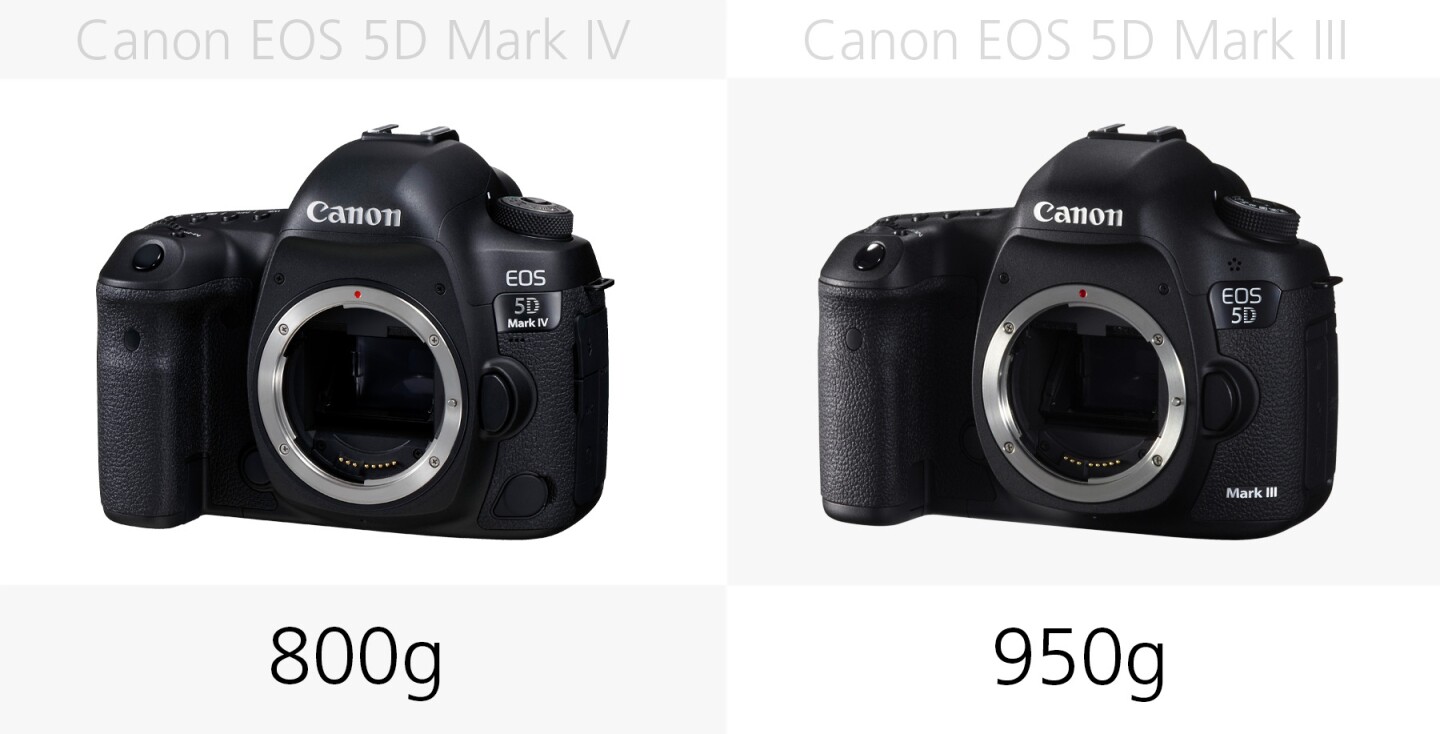
The new 5D Mark IV has managed to shed a bit of weight and now tips the scales some 150 g lighter than its predecessor. However, that's body-only, so by the time you've added a battery, memory cards and a lens, both cameras are going to feel significantly weightier.
Build

These cameras are built to survive the pressures of professional use, and with a magnesium alloy build, they should be able to withstand the odd knock. The Mark IV also benefits from boosted weather sealing, giving you more peace of mind when shooting in the rain.
Sensor size

Unsurprisingly, we've got full frame (36 x 24 mm) CMOS sensors in both of these cameras.
Megapixel count

The 5D Mark IV has received a significant bump in resolution over its predecessor, meaning it's able to capture more detail in images, which should be more than enough for most users. If it's not, there's always the Canon 5Ds.
Processor

The DIGIC 6+ processor in the 5D Mark IV is considerably faster and more powerful than the DIGIC 5+ in the Mark II. This is what lets the camera deal with bigger files faster and shoot 4K video.
Lens mount
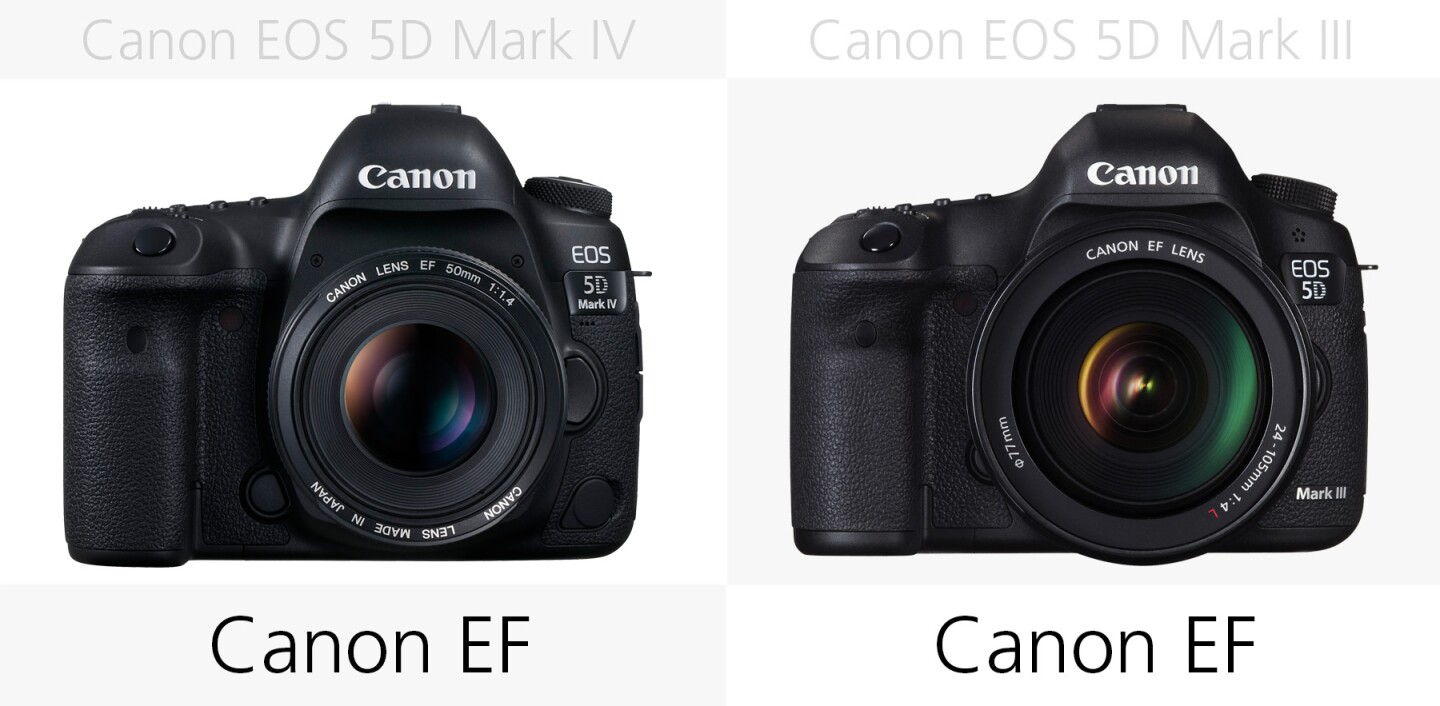
It's no surprise that both cameras use Canon's EF mount, which means that there are plenty of lenses available.
Autofocus

While both cameras feature 61 AF points, the upgraded system in the Mark IV spreads them out farther across the frame, meaning you need to focus and recompose less, and the camera should be better at tracking moving subjects. Dual Pixel CMOS AF also means the Mark IV is at a significant advantage when autofocusing in video recording.
Burst rate
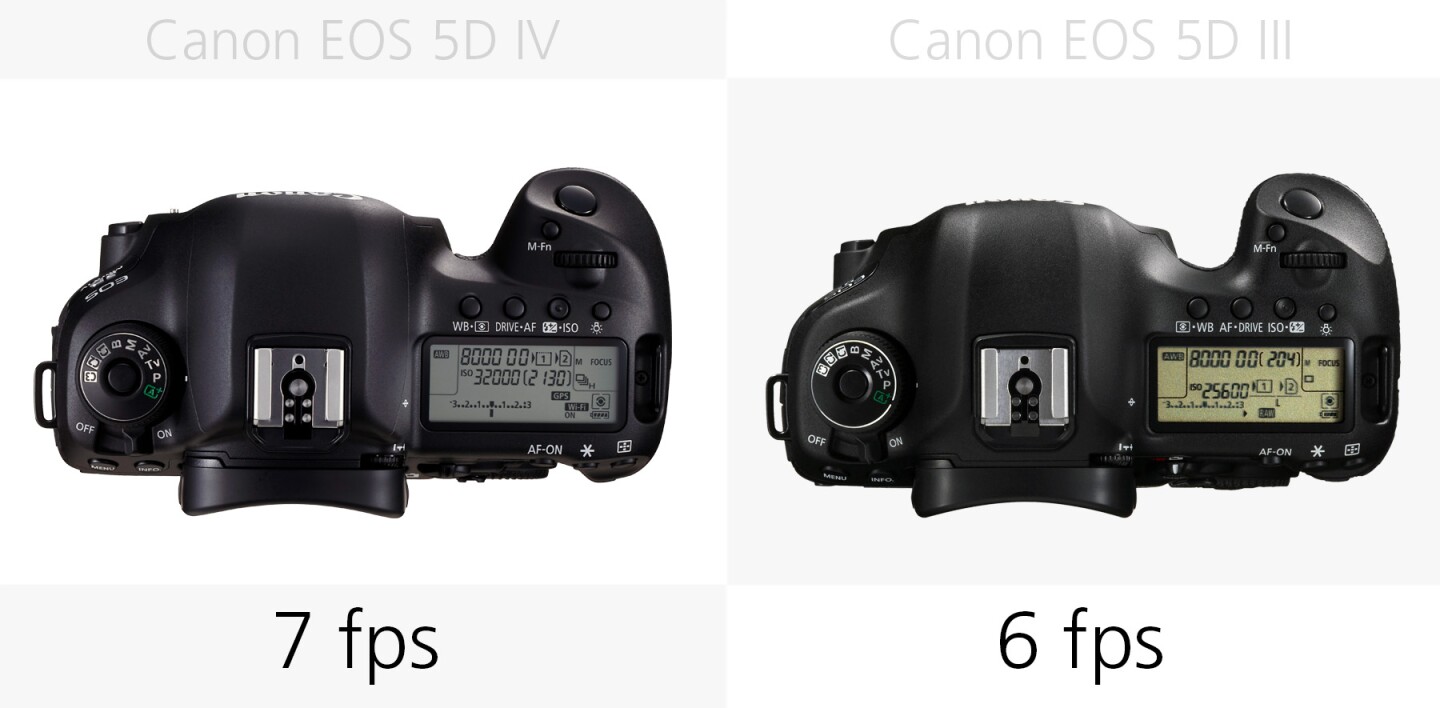
Despite the resolution upgrade, the Mark IV is still able to shoot at a slightly faster burst rate, albeit only one additional frame per second.
ISO range

The increased native ISO range of the Canon 5D Mark IV means it should be better in low-light conditions. In our tests we found its ISO performance was improved over previous models, and we were pleased with the lack of noise up to ISO 12800.
4K video
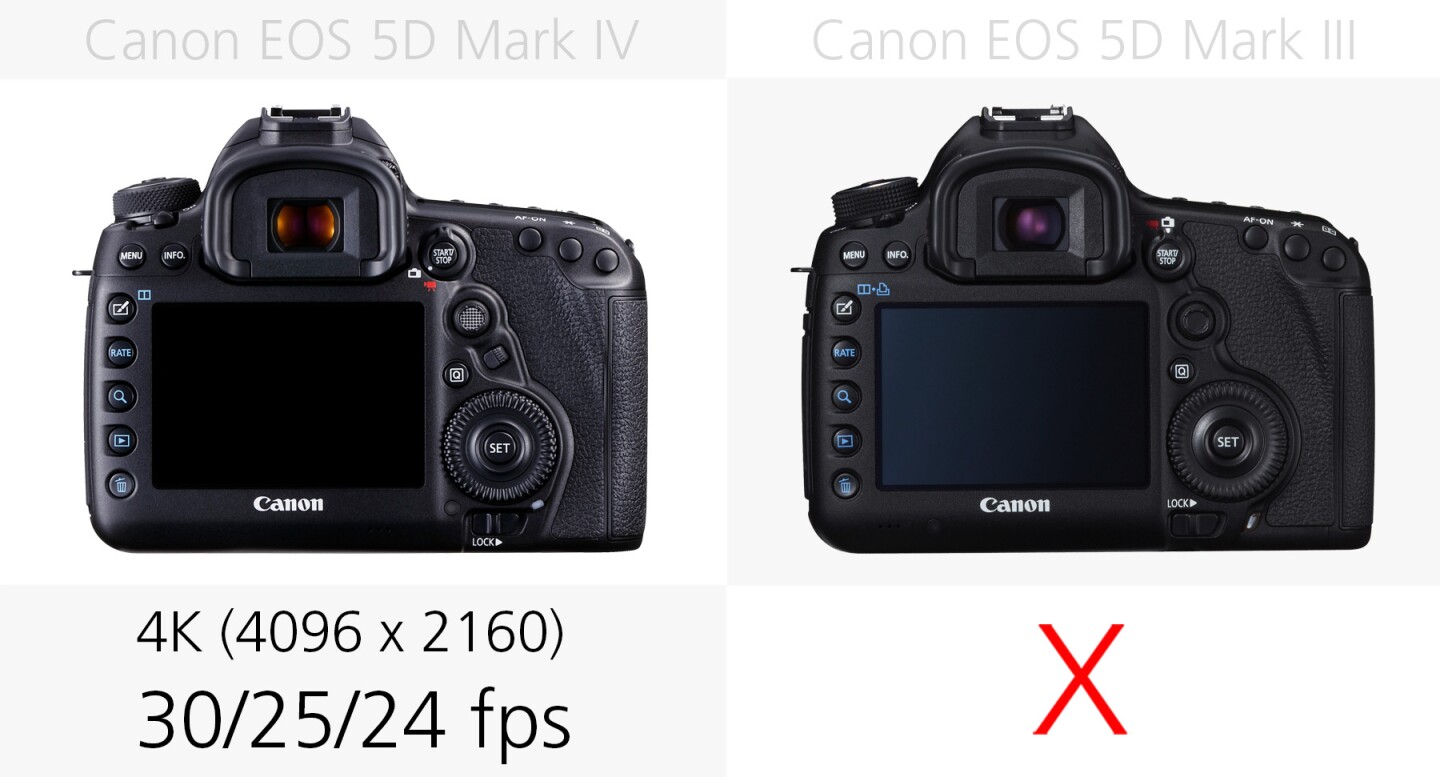
One of the big differences between the two cameras. The Mark IV can shoot 4K video, while the Mark III can't. However, it should be noted that this 4K recording does incur a 1.74x crop factor.
HD video
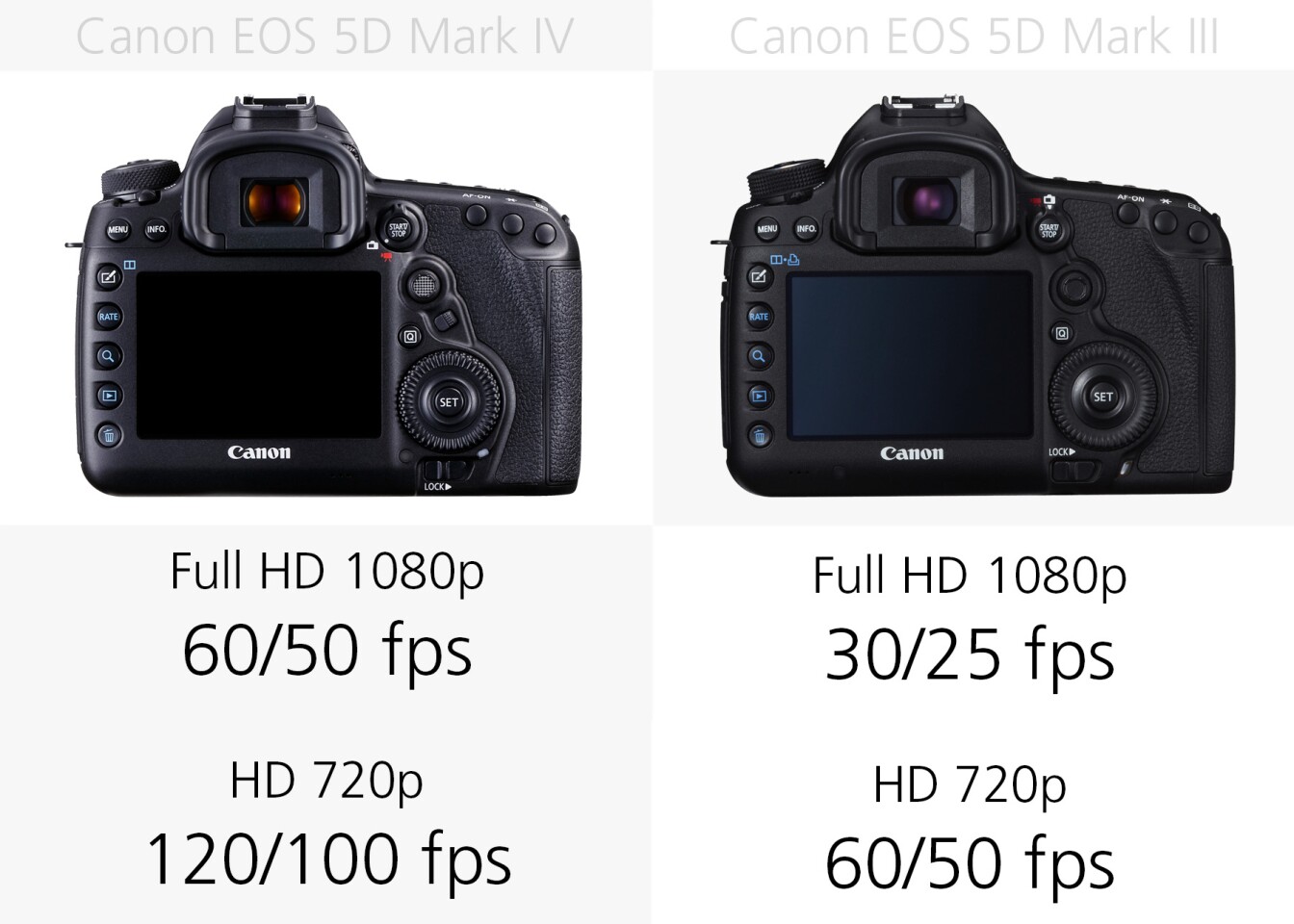
Both cameras shoot Full HD video, though the Mark IV again comes out on top because it can do so at up to 60 fps, compared to the 30 fps of the Mark III. The Mark IV can also shoot HD footage at 120/100 fps, for producing slow motion footage.
Viewfinder

The big and bright optical viewfinders on both 5D cameras offer 100 frame coverage, meaning you get to see exactly what you are shooting.
Monitor
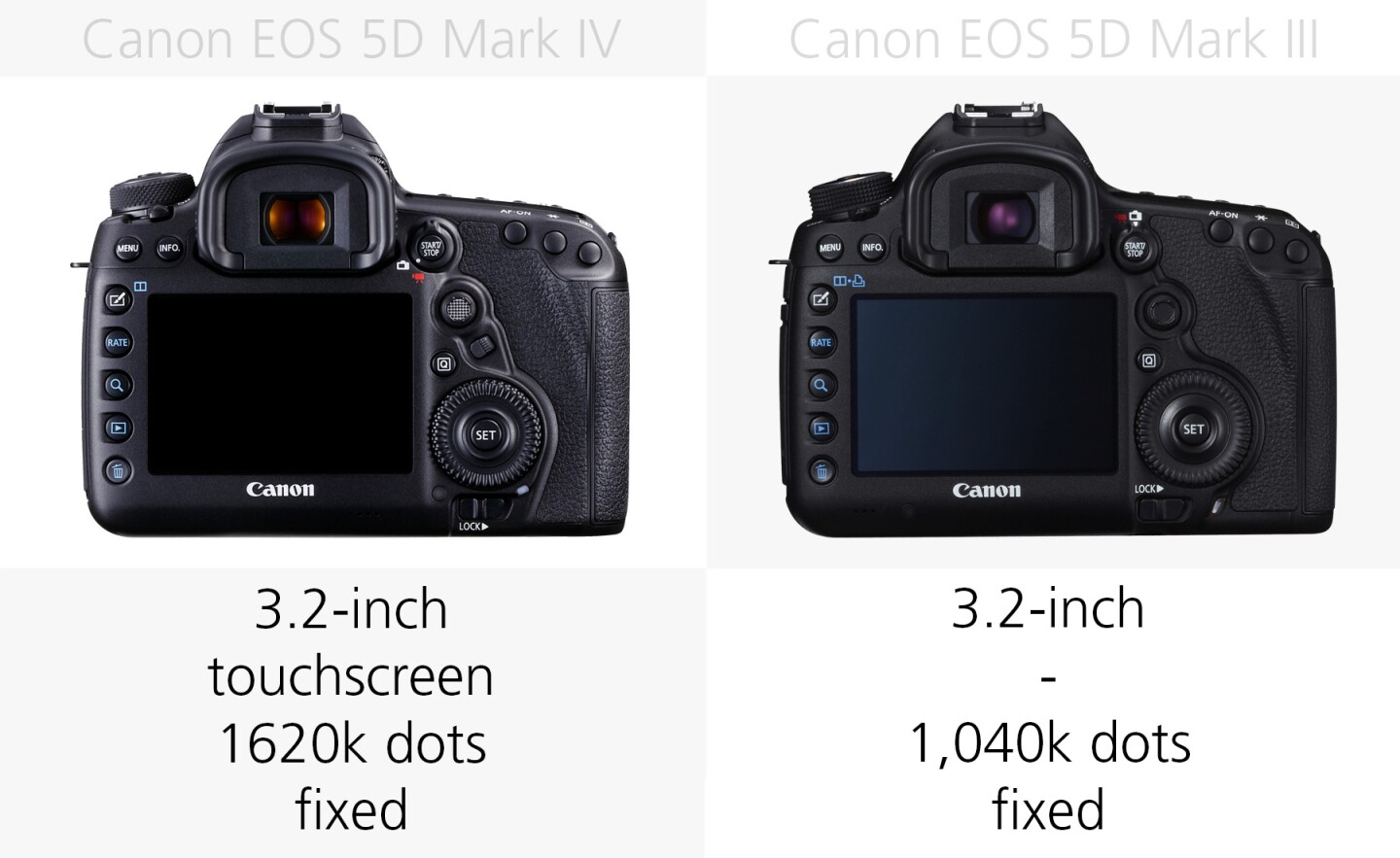
While touchscreens have been slow to appear on high-end DSLRs, they are now well and truly here. As such the monitor on the 5D Mark IV gains touchscreen abilities, which can be used in menus, as well as when shooting or reviewing images. It also has a higher resolution, though it's still fixed unlike that on the Pentax K-1.
Photo file type

Both cameras can shoot photos as JPEGs or RAW files which let you make the most of the camera's ability. However, Dual Pixel RAW is a new feature on the Mark IV which lets you make additional adjustments such as shifting bokeh, and micro-adjusting the area of focus.
Storage media

Both cameras feature one SD memory card slot, and one CompactFlash slot. This mean upgraders won't have to shell out for new memory cards, but also that they can't make use of the CFast goodness that 1D X Mark II shooters can.
Wireless

Given it's now 2016, it would be slightly embarrassing if the 5D Mark IV didn't have some sort of built-in wireless capability. Its Wi-Fi can be used for remote shooting and transferring images to a smart device (iOS or Android), as well as computers. The 5D Mark III required an expensive wireless transmitter to gain such skills.
GPS
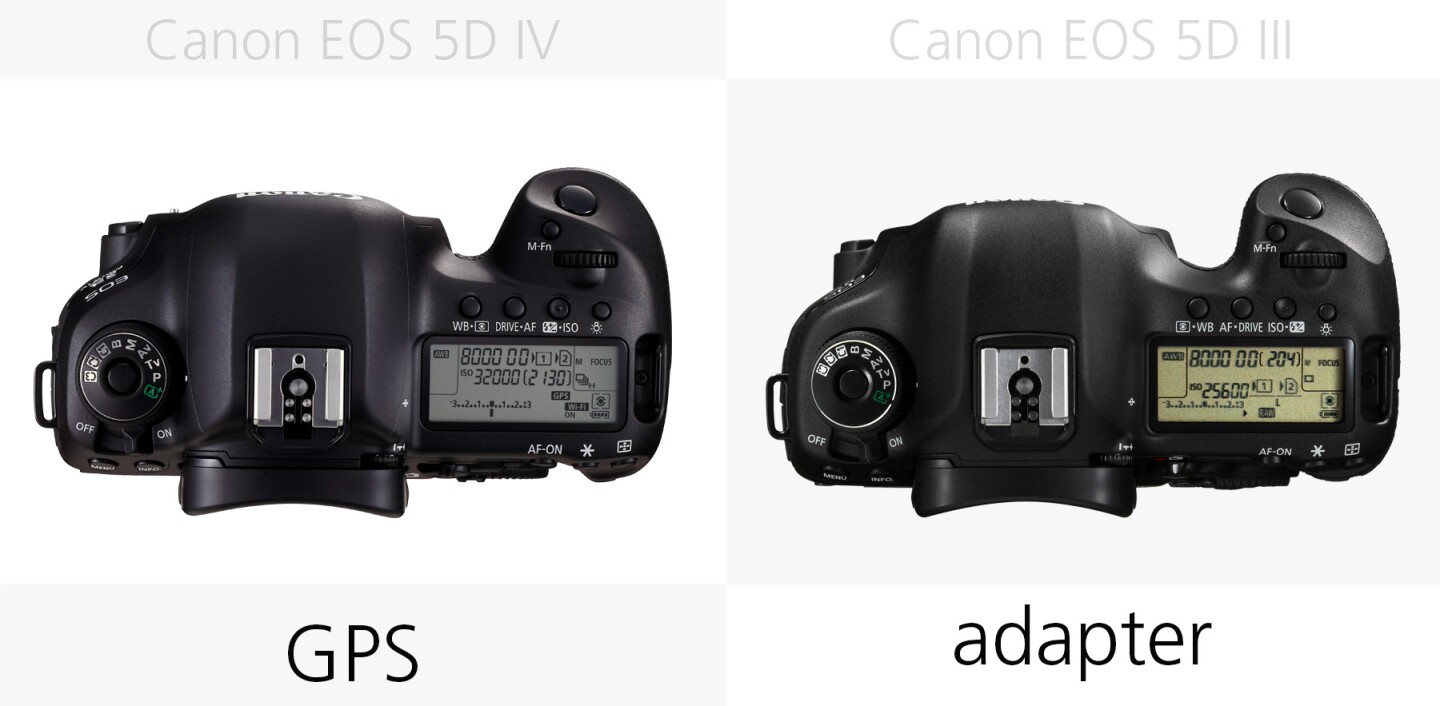
The new 5D Mark IV also adds built-in GPS, which can be handy for logging location data with photos, and synchronizing the time code on multiple camera shoots. The Mark III again required an optional accessory to boast GPS.
Battery life

Finally, a specification battle the Mark III wins. The older camera is said to be able to deliver up to 50 extra shots on a full battery charge. However, that's at 23 °C (73 °F), at 0 °C (32 °F) both cameras will shoot 850 shots.
Release
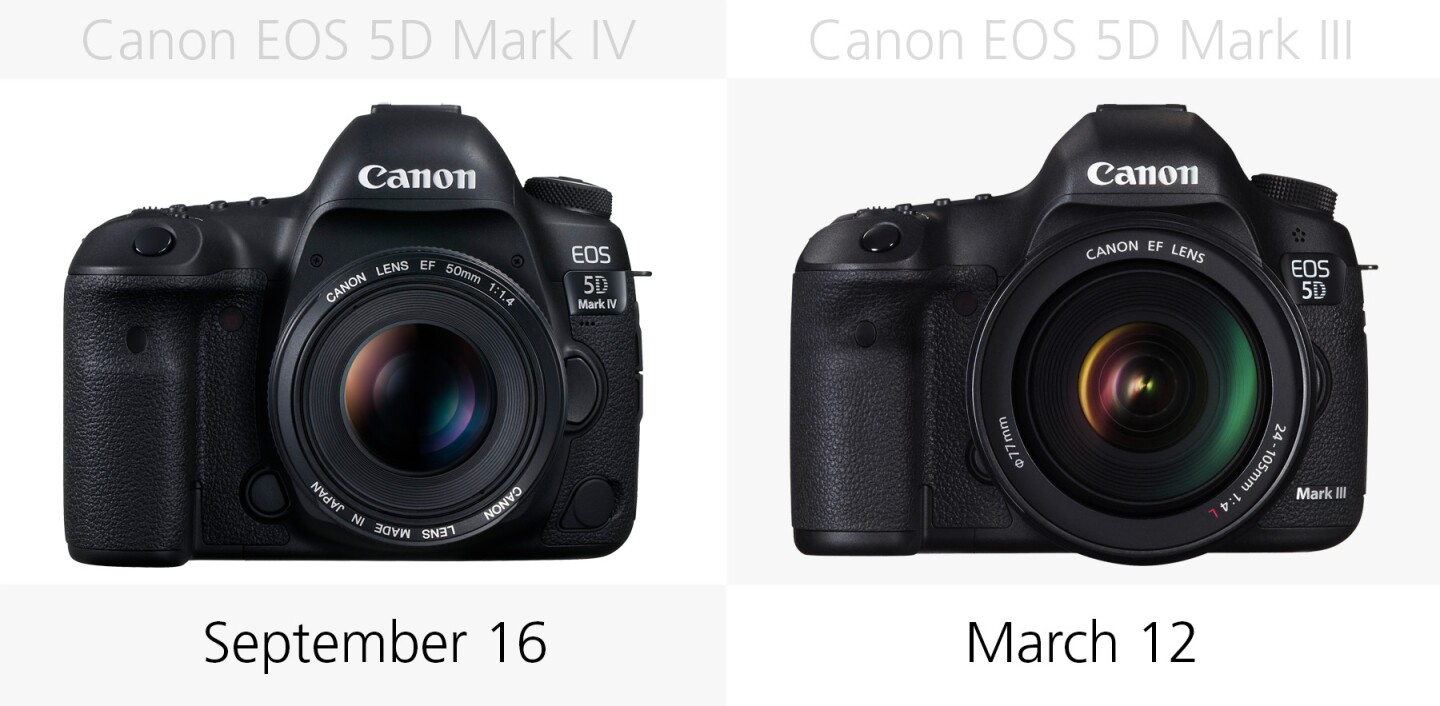
Four years separate the release dates of the two cameras.
Price
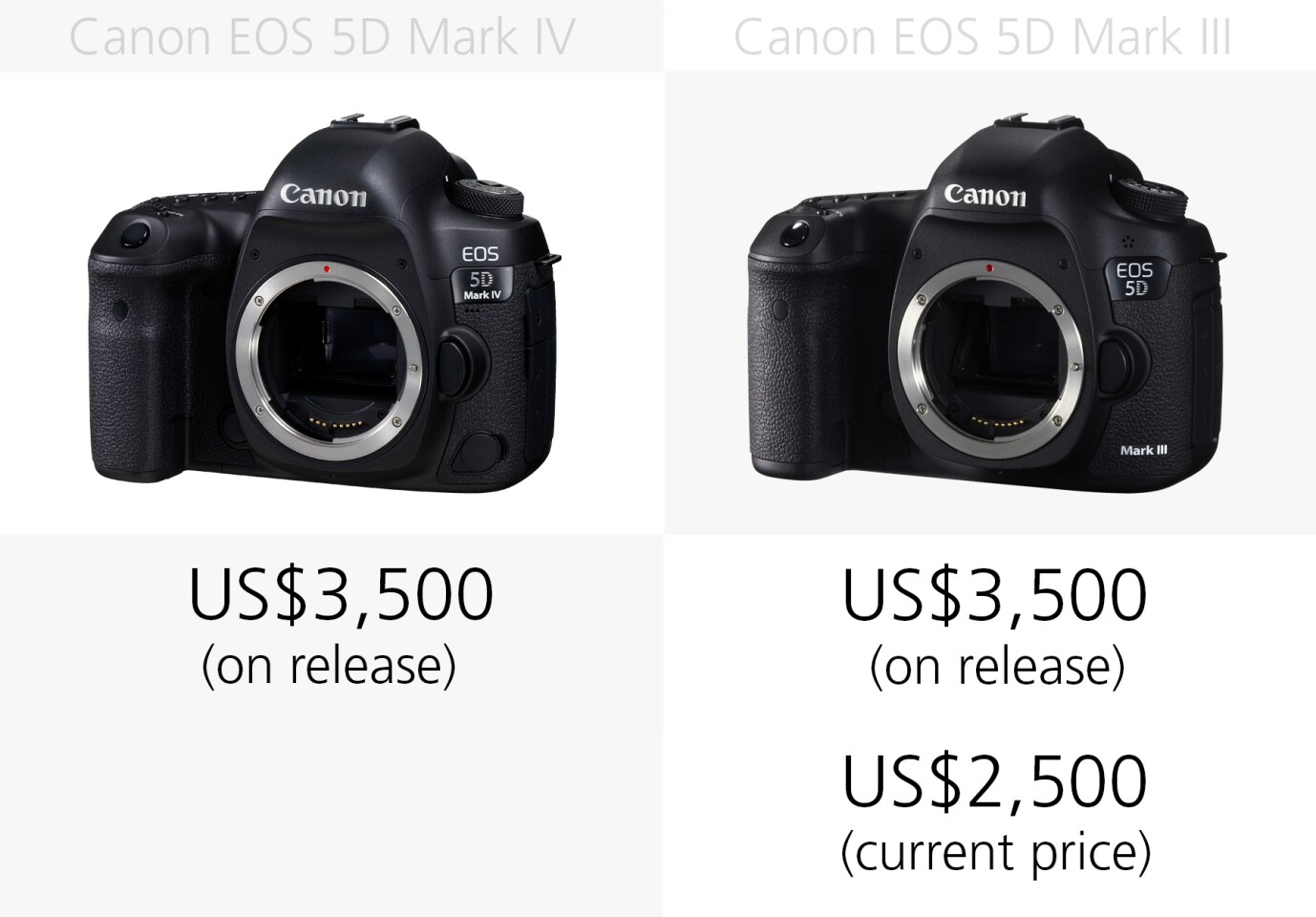
As you would expect for four year old tech, the 5D Mark III can now be had for considerably less than its US$3,500 asking price at launch.
For a bit more information about the Canon EOS 5D Mark IV you can check out our news article about its announcement, and our recent hands-on with the camera.

























